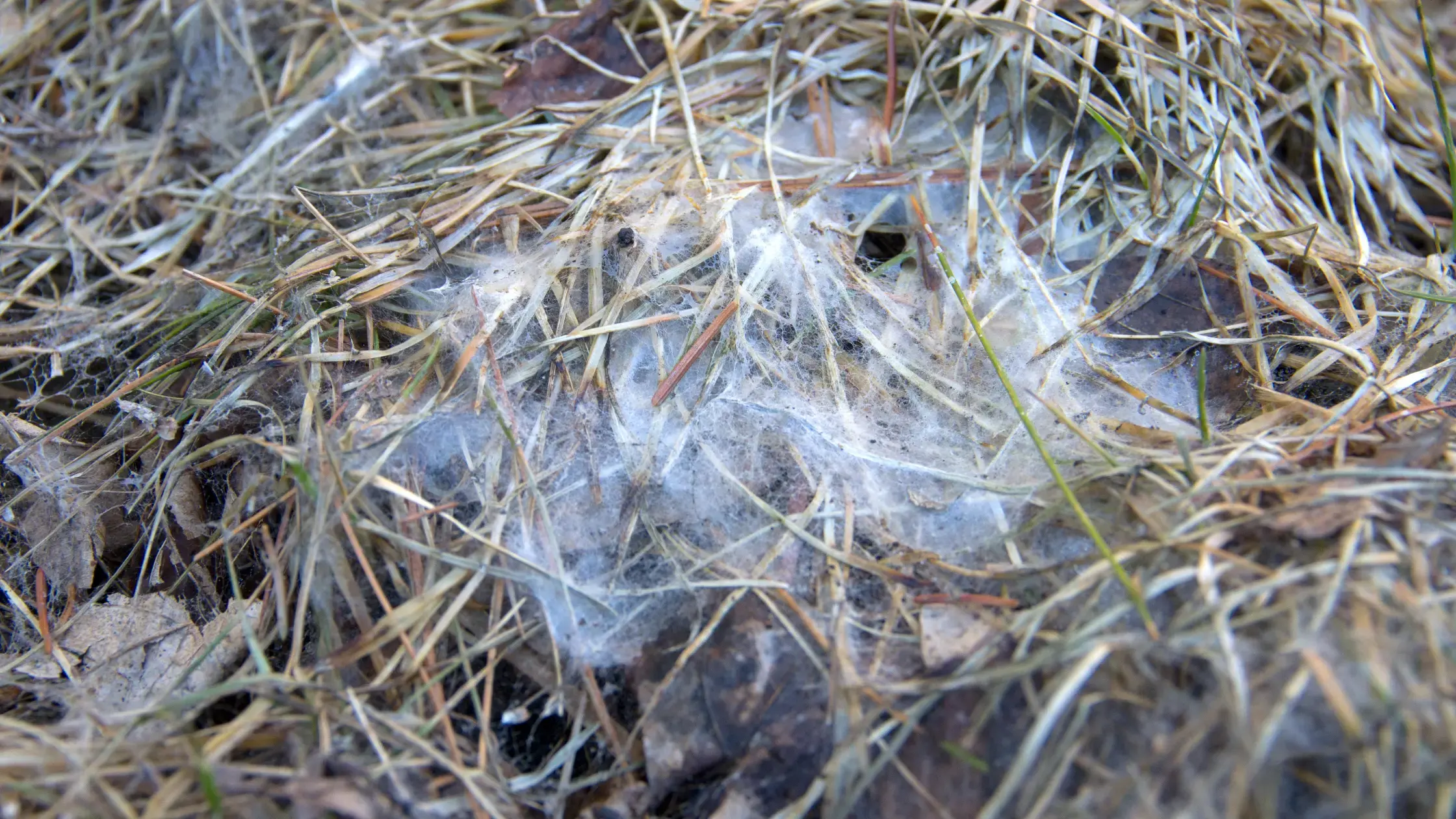New England winters can be tough on your lawn, and one of the most unwelcome surprises after the snow melts is snow mold. This fungal lawn disease thrives in cold, wet conditions, leaving your grass covered in unsightly patches. But don’t worry—there are steps you can take to prevent and treat it.
In this guide, we’ll cover:
- What Is Snow Mold?
- Types of Snow Mold: Pink vs. Gray
- How to Prevent Snow Mold
- How to Treat Snow Mold in the Spring
What Is Snow Mold?
Snow mold is a fungal disease that appears when melting snow leaves behind a damp, matted lawn. It thrives in cool, moist environments and can weaken your grass, making it more susceptible to other issues.
Two main factors contribute to snow mold development:
- Extended snow cover – When snow sits on the grass for long periods, it creates the perfect environment for mold to grow.
- Excessive thatch – A thick layer of dead grass and organic material prevents moisture from properly draining, encouraging fungal growth.
For more details on how snow mold develops, check out this resource from Penn State Extension.
Snow mold on a lawn, showing matted grass with gray fungal growth.
Types of Snow Mold: Pink vs. Gray
There are two types of snow mold that commonly affect New England lawns:
Pink Snow Mold (Microdochium nivale)
- Can survive year-round and continue damaging your lawn even after the snow melts.
- Appears as pink or reddish patches with a white outer ring.
- Can kill grass roots, making it harder for your lawn to recover.
Gray Snow Mold (Typhula spp.)
- Appears as grayish-white patches and is generally less harmful than pink snow mold.
- Typically only damages the grass blades, not the roots.
- Thrives under prolonged snow cover (over 60 days).
For an in-depth look at these fungal diseases, visit UMass Extension's snow mold guide.
How to Prevent Snow Mold
Prevention is key when it comes to protecting your lawn from snow mold. Here’s what you can do before winter arrives:
- Mow your lawn short before winter – Keeping grass too long traps moisture under snow, creating ideal conditions for mold. Aim for a final mow height of about 2 to 2.5 inches.
- Dethatch your lawn in the fall – A thick layer of thatch blocks airflow and increases moisture retention. Removing it helps prevent fungal growth.
- Avoid heavy nitrogen fertilization late in the season – High nitrogen levels encourage excessive growth, which can become matted under snow. Use a balanced fall fertilizer instead.
- Improve lawn drainage – Aerate compacted soil to allow better water flow and reduce standing moisture.
For more tips on preventing lawn diseases, check out this article from The Ohio State University.

A lawn aeration to prevent snow mold by improving soil drainage.
How to Treat Snow Mold in the Spring
If you notice snow mold patches after the snow melts, don’t panic—most cases clear up with some basic lawn care.
- Gently rake affected areas – This breaks up matted grass, allowing air and sunlight to reach the soil and help dry out moisture.
- Encourage air circulation – If possible, use a leaf blower or lightly rake to help speed up drying.
- Overseed if necessary – If snow mold has thinned out patches of your lawn, overseeding in early spring can help restore grass coverage. Be aware, this cannot be done with pre-emergents.
- Avoid excessive watering – Since moisture fuels snow mold, hold off on heavy watering until the grass starts actively growing.
For expert advice on reviving snow mold-damaged lawns, refer to this guide from Michigan State University.

Homeowner raking matted grass to help recover from snow mold damage.
Give Your Lawn the Best Care Year-Round
Snow mold is just one of the many challenges New England lawns face. The good news? You don’t have to handle it alone. At Mainely Grass, we provide expert lawn care solutions tailored to your yard’s needs.

